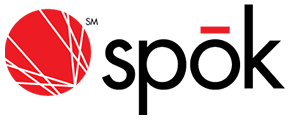Blog
Staying ahead of the curve: Embracing proactive approaches with healthcare communication tools
Whether you work in a rural hospital or an urban health system, communication challenges are common in the fast-paced medical landscape. For the most part, healthcare leaders are forced to react only after these issues have escalated into serious problems.
But it doesn’t necessarily have to be that way. When healthcare organizations shift to proactive strategies, they can avoid communication breakdowns that disrupt clinical workflows and impact patient care. In these five areas, we examine how healthcare communication tools can support these approaches by simplifying information exchanges and improving collaborative processes.
1. Anticipate challenges with data-driven insights
Challenges often arise from unforeseen situations that were not addressed earlier. If your hospital or health system has implemented new technology but lacks insight into how employees are using it, you can’t accurately identify opportunities for improvement.
With healthcare communication software that provides reporting and dashboard analytics, you can access a better view of all enterprise messaging systems.
2. Use real-time communication for faster response times
Many healthcare organizations experience communication breakdowns when delivering critical test result notifications. It’s often done manually through the clinical department, which makes it very difficult to manage regulatory compliance or it very difficult to manage regulatory compliance with internal.
Modern diagnostic departments that implement intelligent critical test result notification (CTRN) systems can streamline and automate the entire workflow. These systems securely deliver results, track acknowledgment by recipients, and enforce predefined escalation paths to ensure the right care team members are alerted at the right time.
Additionally, advanced CTRN platforms offer real-time dashboards that monitor the status of all notifications—highlighting those nearing compliance deadlines. This visibility enables proactive intervention before time windows are missed, reducing the risk of adverse events, improving patient outcomes, and strengthening the department’s ability to manage regulatory compliance effectively.
3. Enhance care team collaboration
Challenges don’t occur in isolation. Different teams and departments must collaborate to administer patient care, and ineffective healthcare communication tools will only slow them down.
Optimized processes help prevent issues before they arise. For example, hospital scheduling software provides real-time updates in your staff directory, which ensures that only the correct on-call clinicians are contacted during their shifts.
4. Reduce risks with automated processes
Human errors can put patients at risk, especially when incorrectly logging information. In fact, a 2024 study found that 20% of medical malpractice cases involve “at least one documentation failure.”
If your radiology department manually enters patient information instead of relying on automated medical alert systems that directly send test results to ordering physicians, it is opening the door to critical mistakes that could impact diagnoses and treatment plans.
5. Ensure compliance and reduce errors
The medical landscape is a highly regulated industry, and compliance remains a significant challenge for many hospitals and health systems. HIPAA violations alone can cost from “$141 to $2,134,831 per violation, depending on the level of culpability.”
Healthcare communication tools ensure that all information is automatically logged and encrypted, providing an audit trail that prevents costly errors and penalties in the first place.
From medical alert systems to hospital scheduling software, this technology is a powerful way to reinforce proactive leadership approaches. Your care teams can save their valuable time and focus more on creating the best treatment plans for their patients.






